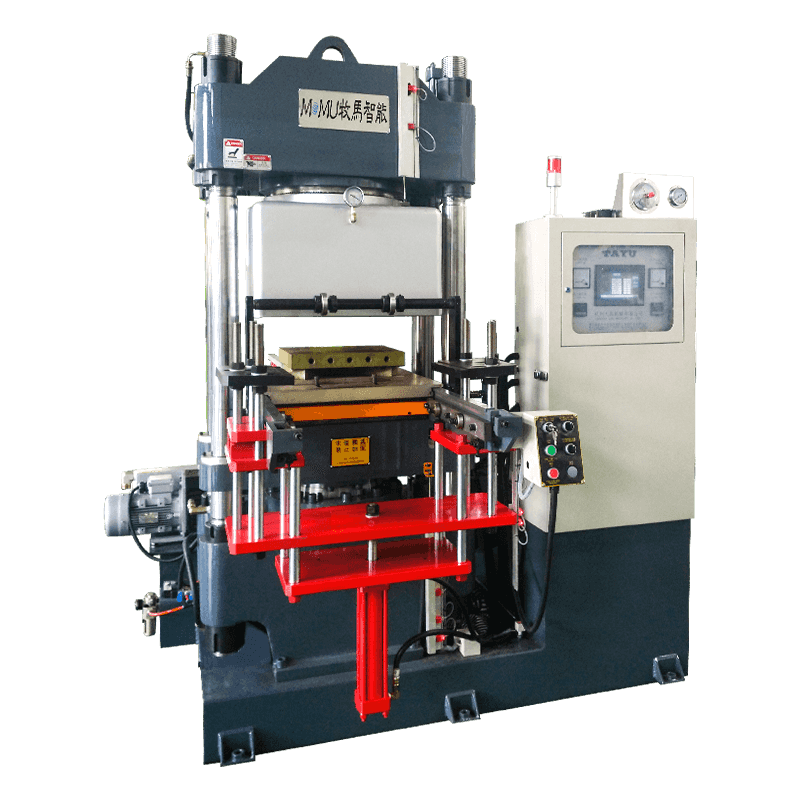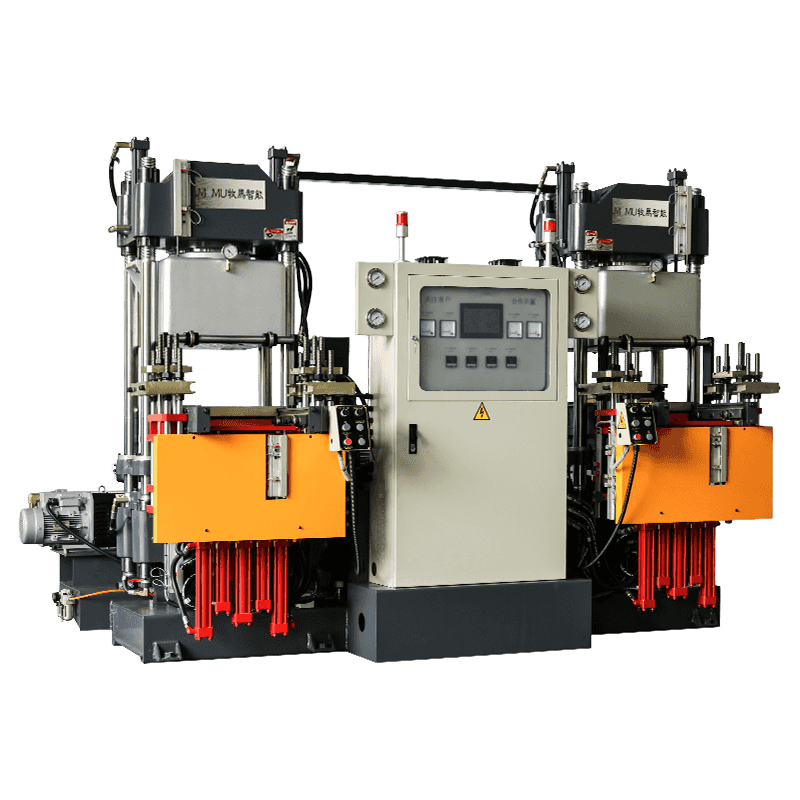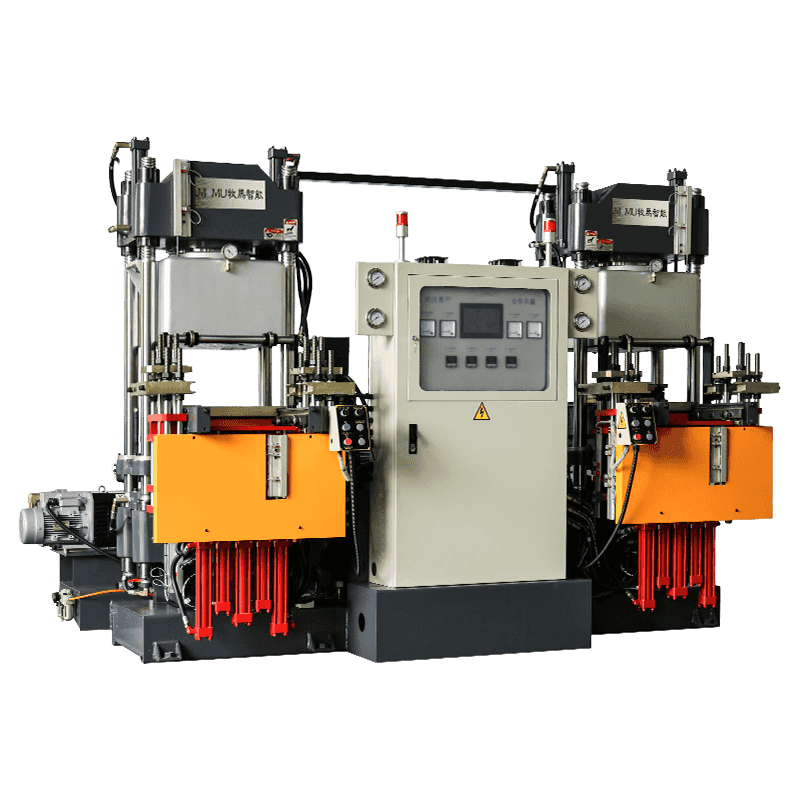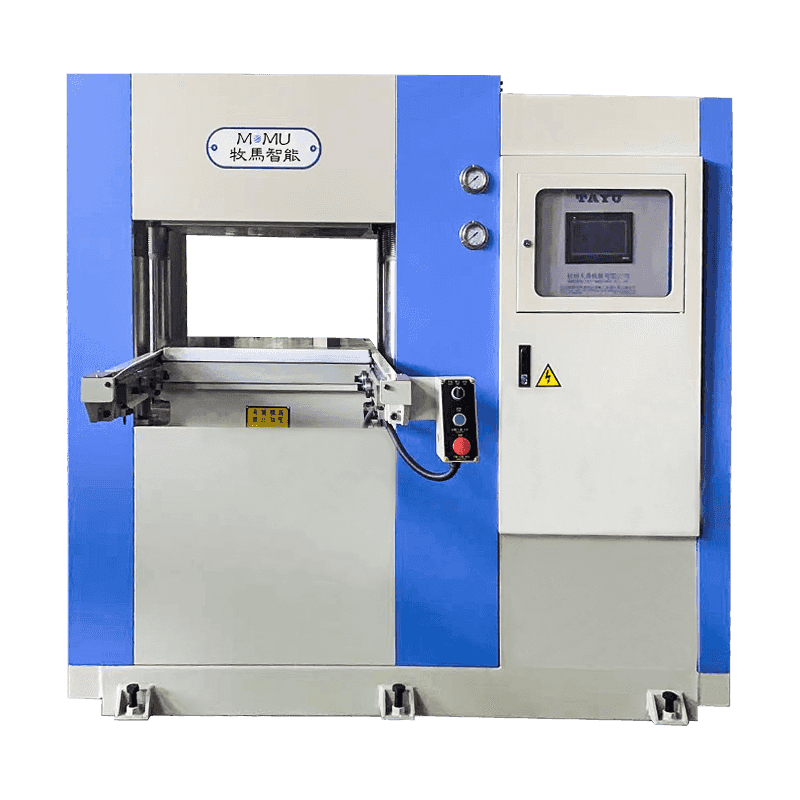Compression molding is one of the oldest and most reliable manufacturing processes used to shape thermosetting plastics, rubber, composites, and advanced materials. In this process, a pre-measured amount of material—often in the form of a pellet, sheet, or powder—is placed into a heated mold cavity. The mold is then closed with a press, applying heat and pressure to cure and solidify the material into the desired shape. While the basic principle remains consistent, the machinery used in compression molding varies significantly based on design, automation level, and application. But what are the different types of compression molding machines available today? How do they differ in structure, function, and suitability for various industries? This article explores the primary categories of compression molding machines, their operational mechanisms, advantages, limitations, and typical applications.
1. Hydraulic Compression Molding Machines
Hydraulic compression molding machines are the most widely used type in industrial settings. They utilize hydraulic fluid to generate the high pressure required to close the mold and maintain consistent force during the curing process.
These machines are known for their high tonnage capacity—ranging from 50 to over 2,000 tons—making them ideal for large or complex parts such as automotive panels, electrical insulators, and appliance components. The hydraulic system allows for precise control over pressure and speed, ensuring uniform material flow and minimal flash (excess material leakage).
Advantages:
High and consistent pressure
Excellent for large-scale production
Smooth operation and energy efficiency
Limitations:
Higher initial cost
Requires regular maintenance of hydraulic systems
Potential for fluid leaks
Common Applications: Automotive parts, electrical housings, aerospace components.
2. Mechanical (Flywheel) Compression Molding Machines
Mechanical compression molding machines, also known as flywheel presses, use a motor-driven flywheel and a clutch mechanism to deliver force to the mold. When the clutch engages, the stored kinetic energy in the flywheel is transferred to the ram, which closes the mold.
These machines are typically faster than hydraulic models and are well-suited for high-speed production of small to medium-sized parts. However, the pressure applied is less consistent and diminishes as the flywheel slows down during the stroke.
Advantages:
High production speed
Lower operating cost
Compact design
Limitations:
Limited tonnage and pressure control
Not suitable for large or thick parts
Less energy-efficient over long cycles
Common Applications: Small rubber gaskets, consumer goods, electrical connectors.
3. Pneumatic Compression Molding Machines
Pneumatic machines use compressed air to drive the mold closure. They are generally used for low-tonnage applications and are popular in laboratory settings or for prototyping due to their simplicity and ease of use.
While they cannot match the force of hydraulic or mechanical systems, pneumatic presses are clean, quiet, and ideal for delicate operations where precision and gentle pressure are needed.
Advantages:
Clean and oil-free operation
Easy to operate and maintain
Suitable for small-scale or R&D work
Limitations:
Limited pressure output
Not suitable for large or high-strength materials
Less effective for thermoset curing requiring high force
Common Applications: Prototyping, small rubber seals, educational labs.
4. Vertical Compression Molding Machines
Vertical compression molding machines feature a top-down pressing mechanism where the upper platen moves vertically to apply pressure. This orientation allows for easier loading and unloading of inserts, preforms, or embedded components.
These machines are especially useful in overmolding operations, where a secondary material is molded around an existing part (e.g., rubber over metal). The vertical design also facilitates automation and integration with robotic systems.
Advantages:
Ideal for insert molding
Space-efficient footprint
Easier automation integration
Limitations:
Limited size capacity
May require custom tooling
Common Applications: Electrical connectors with metal inserts, medical devices, sensor housings.
5. Match-Plate Compression Molding Machines
This type uses a match-plate mold system, where both the top and bottom mold halves are mounted on a single plate. The plate is flipped to switch between loading and molding positions, streamlining the process and reducing cycle time.
Match-plate systems are often automated and used in high-volume production environments where consistency and speed are critical.
Advantages:
Fast cycle times
High repeatability
Reduced labor costs
Limitations:
High initial tooling cost
Less flexibility for design changes
Common Applications: High-volume rubber parts, gaskets, O-rings.
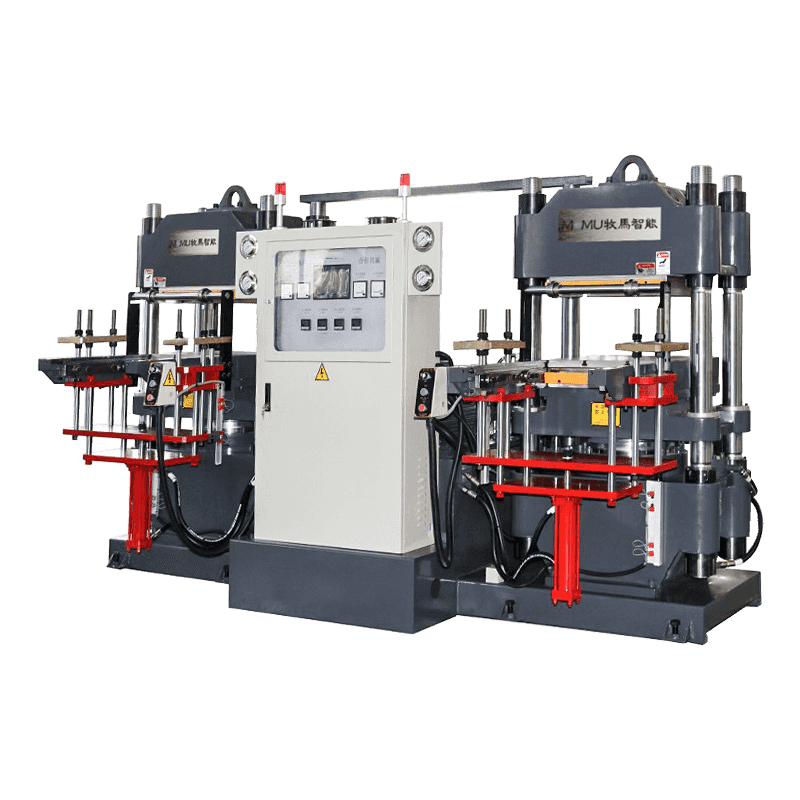
6. Transfer Compression Molding Machines
A hybrid between compression and injection molding, transfer compression machines first compress the material in a chamber (pot) before forcing it into the mold cavity through small runners. This method ensures more uniform material distribution and is excellent for intricate or thin-walled parts.
It combines the low material waste of compression molding with the precision of injection molding.
Advantages:
Better flow control
Reduced flash
Suitable for complex geometries
Limitations:
Higher equipment and maintenance cost
More complex mold design
Common Applications: Precision rubber components, medical seals, electronic insulators.
Comparison of Compression Molding Machine Types
The following table summarizes the key features and differences among the main types of compression molding machines:
| Machine Type | Pressure Source | Tonnage Range | Speed | Automation Level | Best For | Limitations |
| Hydraulic | Hydraulic fluid | 50 – 2,000+ tons | Medium | High | Large, complex thermoset parts | High cost, maintenance-intensive |
| Mechanical (Flywheel) | Flywheel & clutch | 10 – 500 tons | High | Medium | High-speed production of small parts | Limited pressure control |
| Pneumatic | Compressed air | < 50 tons | Low-Medium | Low | Lab use, prototypes, small parts | Low force, not for heavy-duty use |
| Vertical | Hydraulic or pneumatic | 10 – 300 tons | Medium | High | Insert molding, overmolding | Limited size, specialized applications |
| Match-Plate | Hydraulic | 50 – 1,000 tons | High | High | High-volume production, consistent parts | Expensive tooling, inflexible |
| Transfer Compression | Hydraulic | 30 – 800 tons | Medium | Medium-High | Complex, thin-walled, or detailed parts | Complex design, higher cost |
Conclusion
Compression molding remains a vital manufacturing process across industries such as automotive, aerospace, electronics, and healthcare. The choice of machine type depends on several factors, including part size, production volume, material properties, and required precision. Hydraulic machines dominate large-scale industrial applications, while mechanical and pneumatic systems serve niche or small-batch needs. Vertical and match-plate machines enhance efficiency in specialized operations, and transfer compression bridges the gap between traditional compression and injection methods.
So, what is the right machine for your application? Understanding the strengths and limitations of each type allows manufacturers to optimize their production processes, reduce waste, and improve product quality. As automation and smart manufacturing continue to evolve, compression molding machines are also becoming more intelligent, energy-efficient, and integrated—ensuring this time-tested technology remains relevant in the modern industrial landscape.
